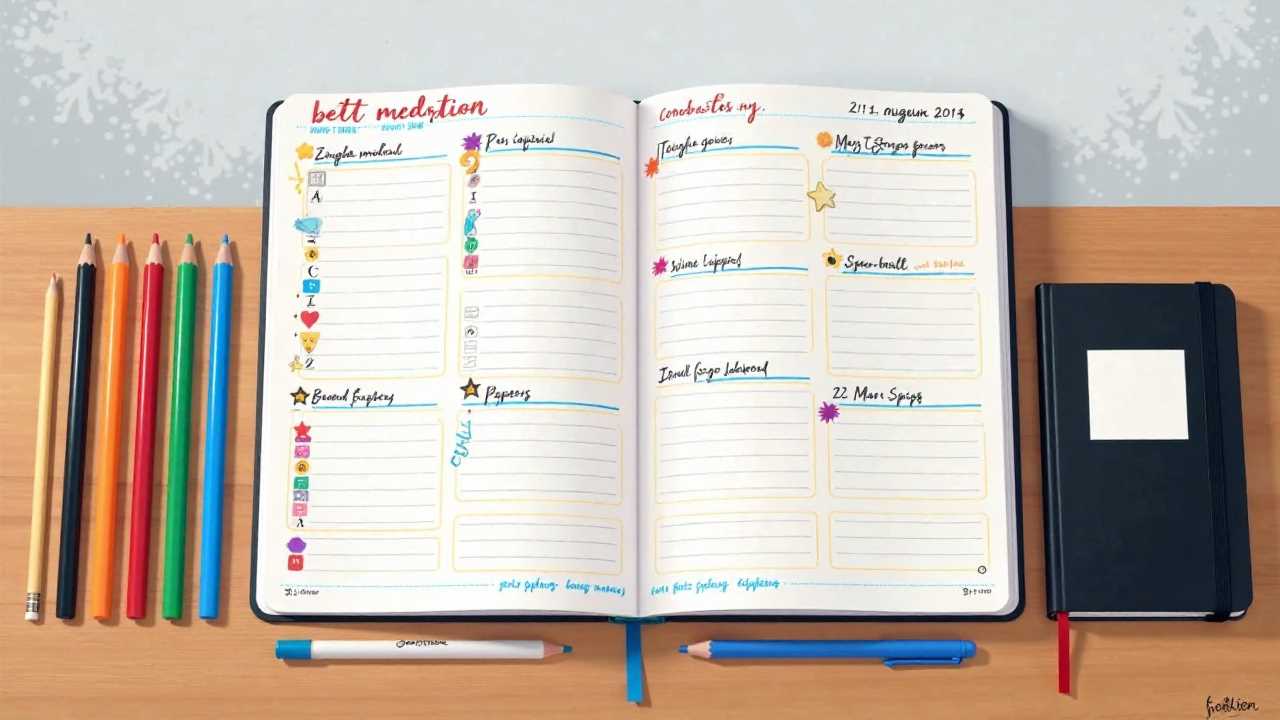
Understanding Bullet Journal Supplies
Bullet journaling has become a popular method for organizing thoughts, tasks, and goals. To effectively utilize this system, selecting the right bullet journal supplies is paramount. This guide will provide insights into the essential components, focusing on writing instruments, paper types, organizational tools, ink quality, durability factors, and budget considerations.
Choosing the Right Writing Instruments
The foundation of any bullet journal lies in the writing instruments used. The right pen can significantly affect your journaling experience.
1. Types of Pens: Consider using gel pens for smooth writing and vibrant colors. They are excellent for adding flair to your entries. Alternatively, fineliners offer precision, making them ideal for detailed drawings and lettering. Ballpoint pens are durable and budget-friendly, perfect for everyday use.
2. Pencil Options: Pencils are versatile and can be used for sketching or planning layouts. Mechanical pencils provide consistent line thickness, while traditional pencils allow for easy erasing.
3. Markers and Highlighters: For those who enjoy color-coding, markers and highlighters are essential. They can help categorize tasks and highlight important dates or notes.
4. Ink Quality: Pay attention to ink quality. High-quality ink prevents smudging and bleeding through the pages, ensuring your journal remains neat and legible. Brands like Micron and Staedtler are known for their reliable ink options.
Selecting the Best Paper Types
The choice of paper types can enhance your bullet journaling experience. Different paper characteristics can influence how your writing instruments perform.
1. Weight and Thickness: Heavier paper (around 160 gsm) can withstand various inks without bleeding. Lighter paper may be more affordable but can limit the types of writing instruments used.
2. Texture: Smooth paper provides a seamless writing experience, while textured paper can add a unique aesthetic. Consider your personal preference when selecting a journal.
3. Dotted vs. Lined: Dotted paper is favored by many bullet journal enthusiasts for its versatility. It allows for freeform layouts while maintaining structure. Lined paper is more traditional and may be suitable for those who prefer guided writing.
Organizational Tools to Enhance Your Journal
Incorporating organizational tools can elevate your bullet journaling practice. These tools help maintain order and streamline your entries.
1. Stickers and Washi Tape: Decorative stickers and washi tape can add personality to your pages while serving functional purposes. Use them to mark important dates or create visual breaks between sections.
2. Rulers and Stencils: A ruler is essential for drawing straight lines and creating layouts. Stencils can help you design headers or shapes, saving time and ensuring consistency.
3. Index and Key: Implementing an index at the beginning of your journal allows for easy navigation. A key can help you track tasks, events, and notes, making your journal more user-friendly.
Durability Factors to Consider
When selecting bullet journal supplies, consider the durability factors. A well-constructed journal will withstand daily use and last throughout the year.
1. Binding Type: Choose between spiral-bound or stitched binding. Spiral-bound journals lay flat, making them easy to write in, while stitched bindings often provide a more polished look.
2. Cover Material: A sturdy cover protects your journal from wear and tear. Leather or hardcovers offer durability, while softcovers may be lighter and more portable.
3. Environmental Factors: Consider how your journal will be used. If you frequently travel, a compact, durable option is ideal. For at-home use, a larger journal may provide more space for creativity.
Budget Considerations for Bullet Journal Supplies
Budget considerations are crucial when building your bullet journaling toolkit. It is possible to create a beautiful and functional journal without overspending.
1. Prioritize Essentials: Start with the basics—choose a journal, a couple of writing instruments, and a ruler. As you become more comfortable with the practice, gradually invest in additional supplies.
2. Bulk Buying: Purchasing supplies in bulk can save money in the long run. Look for sets of pens, stickers, or notebooks to maximize your budget.
3. DIY Options: Consider creating your own embellishments. Hand-drawn designs or homemade stickers can add a personal touch without the cost of store-bought options.
Mastering bullet journal supplies involves understanding the various components that contribute to an effective journaling experience. By carefully selecting writing instruments, paper types, and organizational tools, while considering ink quality, durability factors, and budget considerations, you can create a personalized system that enhances productivity and creativity. With the right supplies, your bullet journal can become a powerful tool for organization and self-expression.
 Writing TipsCreative WritingJournalingSketching TechniquesBuying GuidesPrivacy PolicyTerms And Conditions
Writing TipsCreative WritingJournalingSketching TechniquesBuying GuidesPrivacy PolicyTerms And Conditions
